Fairs & Festivals

NANDADEVI MELA
Nanda Devi Mela, a prominent festival in Uttarakhand's Kumaon region, spans Almora, Nainital, Bageshwar, Bhowali, and Kot, reaching remote Johar villages. Held annually in September, the main fair in Almora traces its origins to the Chand Kings era. Also known as Nanda Devi Mahotsav, this 5 to 7-day cultural celebration coincides with the Nandashtami festival, honoring the revered goddess Nanda Devi and drawing devotees from across Uttarakhand.

PHOOL DEI FESTIVAL
Phool Dei, Uttarakhand's harvest festival marking the onset of spring, is celebrated by enthusiastic young girls on the first day of Chaitra. Lasting up to a month in some regions, it evolves into a lively carnival. The festival revolves around flowers, with the term 'Dei' representing a ceremonial jaggery pudding, accompanied by offerings of white flour and curd.

GANGA DUSSEHRA FESTIVAL
Ganga Dussehra in Uttarakhand, celebrated over ten days in May-June, venerates the holy Ganga River, believed to have descended from heaven on this occasion. The festival, starting on Amavasya and concluding on Dashami, includes a riverside Aarti in Haridwar and Rishikesh. Emphasizing spiritual purification, devotees partake in sacred Ganga baths and meditate on the riverbanks, culminating the day with floating earthen lamps and devotional songs.
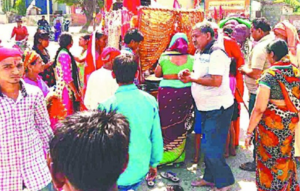
PURNAGIRI MELA
a celebrated festival in Uttarakhand, unfolds near the revered Shri Purnagiri temple on Annapurna Peak, 1676 m above sea level. Believed to mark the spot where Sati's navel was severed, the temple offers stunning views of the ranges. During Navratri, pilgrims flock to this one of the 108 Siddha Peethas, strategically located near Tunya and Tanakpur, seeking blessings amidst the scenic landscapes along the Kali River in the Champawat District of the Kumaon Region.
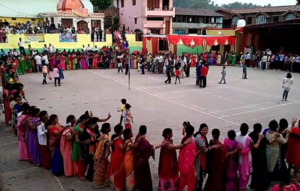
SYALDE BIKHAUTI MELA
an annual fair in Dwarahat, Kumaon, unfolds in two phases in Vaisakh (April/May). The first phase at Vimandeshwar Temple sees folk dancers and locals singing and dancing with traditional flags. Rooted in history, the ritual of 'Oda Bhetna' involves striking a stone, harking back to an ancient legend of bloodshed near Sheetla Devi Temple. The second phase in Dwarahat market adds a cultural touch to this significant event.
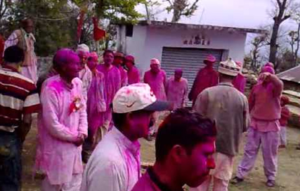
UTTARAKHANDI HOLI
Uttarakhandi Holi, celebrated in Kumaon and Garhwal, is a unique cultural experience signifying the triumph of good over evil and the arrival of spring. Kumaoni Holi, spanning two months, reflects the joy of togetherness and agricultural prosperity during the sowing season. This vibrant festival weaves together traditions, culture, and the colorful spirit of celebration, making it a must-experience event in Uttarakhand.

HARELA AND BHITAULI FESTIVAL
Harela, a cherished Kumaoni folk festival in Uttarakhand's Kumaon Region, marks the onset of new seasons during Chaitra Navratri, Sharad Navratri, and Shravan. Celebrated thrice a year, it holds special significance for agriculturally based communities. Women sow seven types of grains on the first day, symbolizing future harvest, and the yellow leaves, called Harela, are cut on the tenth day. This festival is followed by Bhitauli, where young girls in the family receive money, emphasizing the intertwining of culture, agriculture, and community traditions.
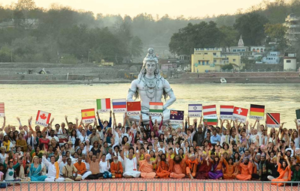
INTERNATIONAL YOGA FESTIVAL RISHIKESH
The International Yoga Festival in Uttarakhand, hosted annually in Rishikesh since 1999, is a celebration of the transformative practice of Yoga. Held at Parmarth Niketan Ashram, in the 'Yoga Capital of the World,' Rishikesh, the festival offers a diverse range of yoga routines, including Vinyasa, Bhakti, Kundalini, Raja, Iyengar, and Ashtanga Yoga. Rooted in the teachings of Patanjali, it attracts a global community seeking holistic well-being for the body, mind, and soul.
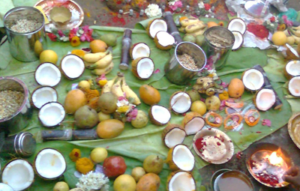
GHEE SANKRANTI
Ghee Sankranti, or Olgia festival, celebrated on the first day of Bhado in Uttarakhand, holds immense cultural importance. This ancient festival, deeply rooted in tradition, joyfully coincides with the flourishing harvest season when crops, milk-giving animals, and fruit-laden trees signify prosperity. It is a heartfelt expression of gratitude by the farming communities, marking a time-honored celebration of abundance and the fruitful culmination of hard work.
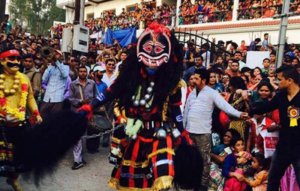
HILL JATRA
Hilljatra, a traditional festival in Uttarakhand's Pithoragarh district, is celebrated by the farming community and traces its origin to the Sorar Region of West Nepal. Revering a white-clothed deer as a regional god, the festival unfolds in three phases. It involves goat sacrifices in the first phase, public dramas in the second, and concludes with songs and dances, showcasing a harmonious blend of cultural and religious traditions.
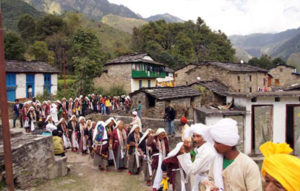
KANGDALI FESTIVAL
The Kandali Festival in Pithoragarh District, Kumaon region of Uttarakhand, occurs every 12 years between August and October in the Chaundas Valley, synchronized with the blossoming of the Kangdali plant. Highly anticipated by the Rung Tribals, the festival marks the commemoration of the defeat of Zorawar Singh's army in the late 19th century. The last celebrated occurrence of this local festival was in 2011, offering a distinctive blend of cultural celebration and historical remembrance.
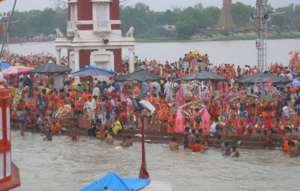
KANWAR YATRA
Kanwar Yatra, a sacred pilgrimage during the Hindu month of Shravan, sees millions of devotees, known as 'Kanwariyas,' traveling to Haridwar, Gangotri, and Gaumukh in Uttarakhand from various parts of India. Chanting Bol Bam, they collect sacred water from the Ganges and carry it across hundreds of miles to offer at Shiva temples like Pura Mahadeva, Augharnath in Meerut, and Kashi Vishwanath, Baidyanath, and Deoghar. This monsoon pilgrimage also involves devotees observing fasts on Mondays in devotion to Lord Shiva.
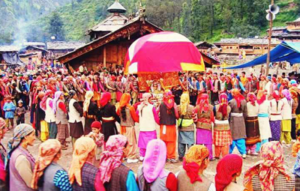
BISSU MELA
Bissu Mela, a lively celebration in the Chakrata Block of Dehradun District, is hosted by the Jaunsari tribe in Uttarakhand. Residing near the Himachal border in the Jaunsar-Bawar Region, this fair offers a glimpse into the rich cultural heritage of the Jaunsari community, with roots traced back to the Pandavas of Mahabharat. The festivities provide a warm invitation for locals and visitors to immerse themselves in the diverse traditions of the Jaunsari tribe.
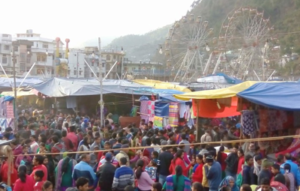
MAGH MELA
Magh Mela, a significant fair in Uttarkashi district, Garhwal Region, Uttarakhand, holds religious and cultural importance and has evolved into a notable tourism festival. Taking place during the Magh Month (January) from the 14th to the 21st, coinciding with Makar Sankranti, the fair commences with the arrival of deity-laden dolis to Uttarkashi's Ramlila Ground. Devotees converge from various places for Ganga Snan, participating in the ritualistic dip in the Ganga River during this annual event.
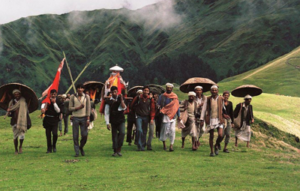
NANDA DEVI RAJ JAT
Nanda Devi Raj Jaat Yatra, known as Himalayan Mahakumbh, is a sacred festival in Uttarakhand honoring Goddess Nanda Devi. Devotees from Garhwal, Kumaon, and beyond partake in this pilgrimage, considering Nanda Devi as the foremost deity in the region. Held once every twelve years in the Chamoli District of Garhwal, the yatra spans three weeks, covering a rigorous route that takes almost twenty-two days to complete, signifying a deeply revered and intricate spiritual journey.
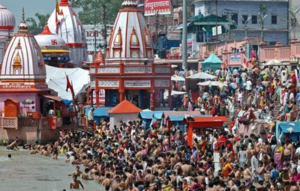
KUMBHMELA AT UTTARAKHAND
Haridwar, graced by the sacred River Ganga, hosts some of the most significant gatherings of Hindu devotees during the Kumbh Mela, Ardh Kumbh Mela, and Maha Kumbh Mela, recurring every 3, 6, and 12 years respectively. This grand event attracts millions of devotees globally who come to partake in the purifying ritual of taking a dip in the holy waters of the Ganges. According to Hindu mythology, Haridwar is revered as one of the four places where the elixir fell during the celestial war, adding profound spiritual significance to the land. The Kumbh Mela is also observed in Nasik, Allahabad, and Ujjain.
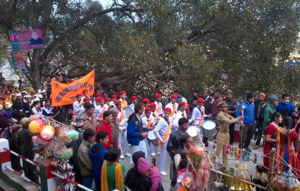
UTTARAYANI MELA
The Uttarayani Fair, occurring in the second week of January during Makar Sankranti, is a significant celebration in Uttarakhand's Kumaon region. Held in places like Bageshwar, Ranibagh, and Hanseswari, with Bageshwar hosting the largest fair, the sacred grounds of Bagnath Temple witness a week-long festival. During this auspicious event, devotees take a dip in the River Saryu as the sun transitions from the Southern to the Northern Hemisphere, symbolizing a spiritual and celebratory connection to the changing seasons.
